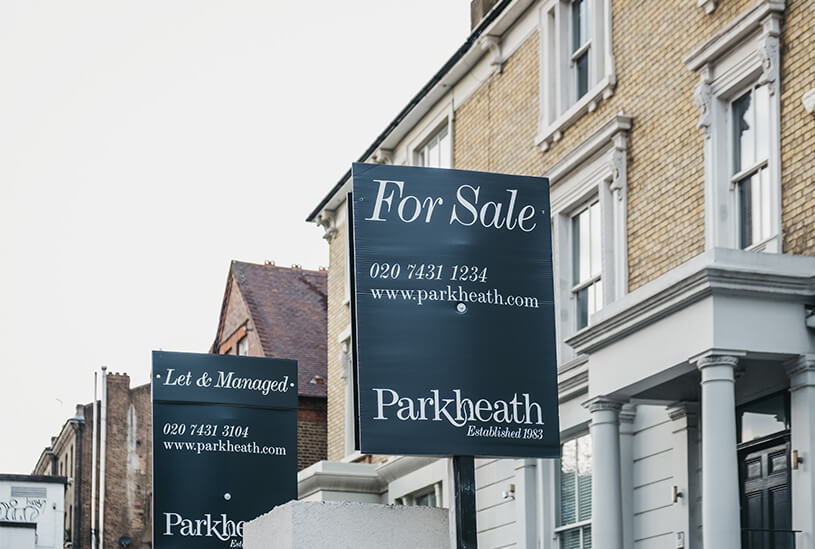The tax-free allowance for landlords selling a property has been reduced significantly over the last two years. This means many landlords could be hit with a higher capital gains tax (CGT) bill.
Find out how much it could cost you, which regions could be hardest hit, and how the tax changes could impact landlords’ selling decisions.
Capital gains tax allowance reduced from April
Announced in the Autumn Statement in 2022, Chancellor Jeremy Hunt reduced the tax-free allowance for capital gains tax from £12,300 to £6,000 in April 2023.
It will then be reduced from £6,000 to £3,000 from 6 April 2024.
Landlords have to pay capital gains tax on the profit they make when they sell a buy-to-let property. A lower tax-free allowance means landlords will have to pay more capital gains tax when they sell.
The government estimates that the allowance reduction from £12,300 to £3,000 over the last two years will mean 260,000 taxpayers will be brought into the scope of CGT for the first time, many of whom could be landlords.
Changes to capital gains tax have resulted in a huge rise in the number of people needing to pay it when selling assets over the last decade.
In the 2010-11 tax year, 188,000 taxpayers paid £4.23 billion in CGT, according to official figures reported by The Telegraph.
For the 2024-25 tax year, this is expected to rise to 570,000 people paying over £18 billion in tax on their gains.
Read our guide to capital gains tax to find out more about how it works.
Average landlord CGT bill to rise by £2,600+ in 2024
When the tax-free allowance drops to £3,000 in April 2024, the CGT bill for the typical landlord in England and Wales will rise by £2,610 (12 per cent).
This is according to research from estate agency Hamptons, which shows that when the allowance dropped to £6,000 in April 2023, the average landlord selling a property paid £1,770 more in CGT.
The agency’s analysis found that the typical landlord who sold a property in 2022 paid a CGT bill of £21,260 if they were a higher rate taxpayer.
This means the average CGT bill for landlords, when factoring in 10 per cent for costs, could have risen to over £23,000 by 2023 and almost £24,000 by 2024.
If average property values continue to rise, landlords’ tax bills when they sell could be even higher.
Which regions will be hardest hit by CGT changes?
Average property prices in London, the South East, and East of England have increased the most in recent years.
As a result, Hamptons’ data shows that landlords in these regions will have to pay the highest CGT bills when they sell buy-to-let properties.
Landlords in Wales, the North West, Yorkshire and the Humber, and the North East made the smallest gains when selling a property in 2022, meaning their CGT bills were likely to be lower.
The table below shows the average CGT bill for a higher rate taxpayer in each region between 2022 and 2024. The figures factor in 10 per cent costs and the changes to the tax threshold.
Region | Avg 2022 profit (-10% costs) | Avg 2022 CGT bill | Avg 2023 CGT bill | Avg 2024 CGT bill |
London | £275,787 | £73,780 | £75,540 | £76,380 |
South East | £114,777 | £28,690 | £30,460 | £31,300 |
East of England | £97,479 | £23,850 | £25,610 | £26,450 |
South West | £79,380 | £18,780 | £20,550 | £21,390 |
West Midlands | £55,008 | £11,960 | £13,720 | £14,560 |
East Midlands | £51,939 | £11,100 | £12,860 | £13,700 |
Wales | £48,006 | £10,000 | £11,760 | £12,600 |
North West | £43,974 | £8,870 | £10,630 | £11,470 |
Yorkshire and the Humber | £40,779 | £7,970 | £9,740 | £10,580 |
North East | £20,925 | £2,420 | £4,180 | £5,020 |
England and Wales | £88,245 | £21,260 | £23,030 | £23,870 |
CGT bills are also likely to rise significantly for basic rate taxpayers. This is because if they make a large profit on their property, they could be forced into the higher rate tax band.
Are landlords planning to sell despite tax changes?
Challenging conditions, including higher mortgage costs and increased regulation, could encourage landlords to sell properties.
Simply Business research from last year found that a quarter (25 per cent) of landlords had plans to sell a property before August 2024. Of those planning to sell, 32 per cent said it was due to tax increases.
With the capital gains tax-free allowance dropping significantly in the last two years, some landlords may have sold up sooner to take advantage of the respective CGT allowances of £12,300 and £6,000 in 2022 and 2023.
On the other hand, some landlords who were planning to sell may now be holding on to their properties, waiting for property prices to grow before taking the tax hit.
Are you considering selling a buy-to-let property? Let us know in the comments below.
Property management tips for buy-to-let landlords
- How to prevent frozen pipes – a guide for landlords
- How to complete an inventory and free landlord inventory template
- A landlord’s guide to right to rent checks
- What is the difference between buildings and contents insurance?
Get set with tailored landlord cover
Over 200,000 UK landlord policies, a 9/10 customer rating and claims handled by an award-winning team. Looking to switch or start a new policy? Run a quick landlord insurance quote today.
Photograph: Alena/stock.adobe.com
